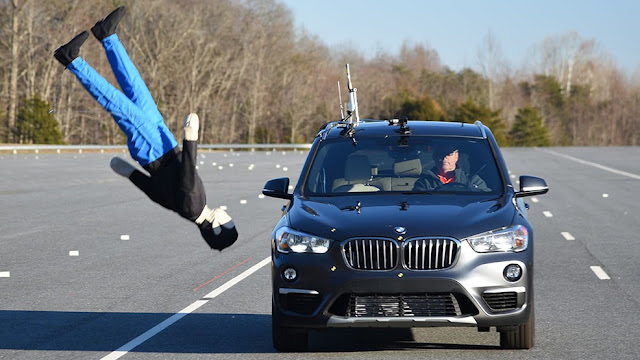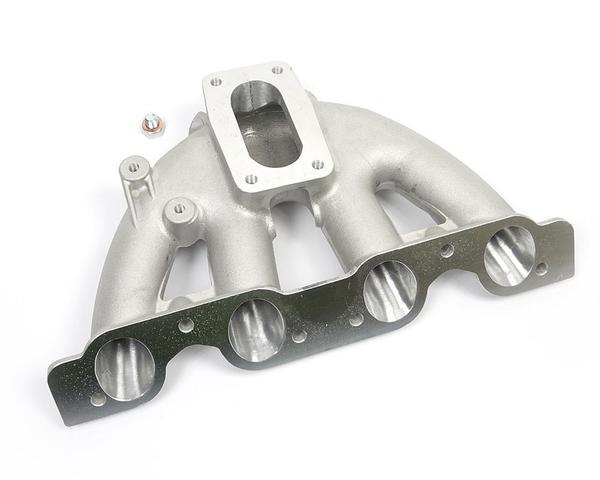Steering System Design Calculation
Please read last 3 blogs as these blogs have theoretical analysis, Design review, DFMEA of brake and steering system. Without previous blogs understanding, below calculation is worthless.
Steering Calculations
Load on Front Axle Wfront = 3762
N (See Table - Brake Design 5 at the end of this blog)
Load on Rear Axle Wrear= 1584
Wheel Base L = 2700mm = 2.7 m
Assumption:
Formula Ford Worst Corner Track
Radios = 200 m
Formula Ford Worst Corner Track
Angle = 150 Degree
Cornering Stiffness Front Cfront=
1250 N/Degree
Cornering Stiffness Rear Crear=
600 N/ Degree
Acker Man Angle = Wheel Base /
Track Radios = 2.7/200 = 0.0135 Radian = 0.773 Degree
Under Steer Gradient K =
{(Wfront/Cfront) – (Wrear / Crear)} = {(3762/1250) – (1584 / 600)}
=
0.3696N/ (N/Degree)
Characteristic Critical Speed =
[{gL(57.3)/K}^0.5] = [{9.81*2.7*(57.3)/0.3696}^0.5]= 64m/s=230Km/h
As per Powertrain Designer
Feedback roughly 250 Km/hour is maximum vehicle speed; so if worst corner on
Formula Ford race track has radios of 200m then driver can maintain speed up to
230Km/h however it is ideal condition without real life factors (check primary
assumption at beginning).
Steering Ratio &
Variable Rack Calculation
|
|||
Steering Ration
|
1 to 1
|
1.25 to 1
|
1.5 to 1
|
1
|
1.25
|
1.5
|
|
Lock To Lock Turn
|
1.4
|
1.4
|
1.4
|
Steering Wheel can turn
|
252
|
252
|
252
|
Front Wheel can turn
|
252
|
201.6
|
168
|
Conclusion
|
Vehicle Topple /Roll Over
|
Quick Turn
|
Smooth Turn
|
Driver’s Input
|
Steering Wheel Turn
|
Wheel Turn
|
Rack Tooth Spacing
|
Steering at Centre
/Middle
|
1.25 Deg
|
1 Deg
|
1.25 Unit
|
Steering Near Full Lock
|
1 Deg
|
1 Deg
|
1 Unit
|
Rack Gear will be designed such that smooth steer near central
position and quick steer near corner.
Lock to Lock Turn
Calculation:
Average Steering Ration
|
(Near Centre Steering
Ration + Near Full Lock Steering Ratio )/2
|
||
(1.25 + 1) /2 = 1.125
|
|||
1.125
|
1.125
|
1.125
|
|
Lock To Lock Turn
|
0.8
|
0.9
|
1
|
Steering Wheel can turn Max
|
144
|
162
|
180
|
Front Wheel can turn Maximum
|
128.0
|
144.0
|
160
|
Conclusion
|
Choose from above as per
worst track angle
|
||
Conclusion:-
According to race track
requirement Steering design can be fixed by keeping Steering Lock to Lock=1.4 turn with Average Steering Ratio of 1.125.
Challenge:- Vehicle can topple / roll over at sharp corner. To avoid this driver
can reduce speed. Or at early design stage Chassis Designer can reduce height
of centre of gravity.
Next is design verification process for brake and steering. DVP is
sequential process; however performance/ durability failure at latter stage can
compel us to repeat the DVP testing from beginning for subsystem or whole
vehicle. So Front Loading concept is very popular in industry: - high resources
are allocated at early stage of DVP for DFMEA and simulation. Manufacturing
starts only after successful child part+ Subsystem+ Vehicle Simulation result.
Please read next slide to know how testing of steering and brake is done in industries.
Brake Design 5 Table for reference ( It is explained in previous 3 blogs, here only for reference)
|
Brake Design Iterations
|
D1
|
D2
|
D3
|
D4
|
D5
|
1V*
|
Design Review
|
|
Pedal Level Ratio
|
5
|
4
|
5
|
5
|
5
|
5
|
If Master Cylinder
dia is increased, driver needs to apply more force to stop vehicle.
|
|
Master Cylinder
Diameter mm
|
10
|
20
|
10
|
10
|
10
|
10
|
|
|
Front/rear caliper
piston diameter mm
|
45
|
40
|
45
|
45
|
45
|
45
|
|
|
Mean effective
radius of front braking disc mm
|
230
|
230
|
220
|
200
|
250
|
230
|
For bigger Disc,
Driver needs to apply lesser force.
|
|
Mean effective
radius of rear braking disc mm
|
220
|
220
|
220
|
200
|
250
|
220
|
|
|
Vehicle Parameters
|
|||||||
|
Height of Centre of
Gravity mm
|
350
|
350
|
350
|
350
|
350
|
300
|
*Vehicle COG, Wheel
Base and Front Axle Location is changed for study.
|
|
Wheel Base Length
mm
|
2700
|
2700
|
2700
|
2700
|
2700
|
2800
|
|
|
Front Axle to
Centre of Gravity Distance mm
|
1900
|
1900
|
1900
|
1900
|
1900
|
2100
|
|
|
Driver effort to
generate Actual Braking Force equivalent to vehicle weight (N)
|
|||||||
|
To generate
Normalized Actual Front Braking force equal to 1g
|
60
|
375
|
60
|
70
|
53
|
50
|
D5: At 1g driver
need to apply only 53N to stop front wheel and 70N to stop rear wheel.
|
|
To generate Normalized
Actual Rear Braking force equal to 1g
|
75
|
325
|
75
|
90
|
70
|
75
|
|
|
Performance of
Vehicle ( Different Driving Condition)
|
|||||||
|
Maximum wheel
unlocked deceleration ( Stable Design up to)
|
1 g
|
1 g
|
1.2 g
|
1.3 g
|
1.2 g
|
1.5g
|
Design 4 is most
stable up to 1.3g line.
|
|
Optimal Front Force
0 at this deceleration (g) (X Intersection)
|
-2.28
|
-2.28
|
-2.28
|
-2.28
|
-2.28
|
-2.33
|
For further Improvement COG must be lowered, Wheel base need to be increased and COG shifted to rear wheel. |
|
Optimal Rear Force
0 at this deceleration (g) (Y
Intersection)
|
5.42
|
5.42
|
5.42
|
5.42
|
5.42
|
7
|
|
|
Max deceleration during rear circuit failure with µ 0.8
Dry
|
0.25
|
0.25
|
0.25
|
0.27
|
0.27
|
0.2
|
|
|
Max deceleration
before front wheel lock with µ
0.3 Wet
|
0.2
|
0.2
|
0.2
|
0.2
|
0.2
|
0.18
|
|







